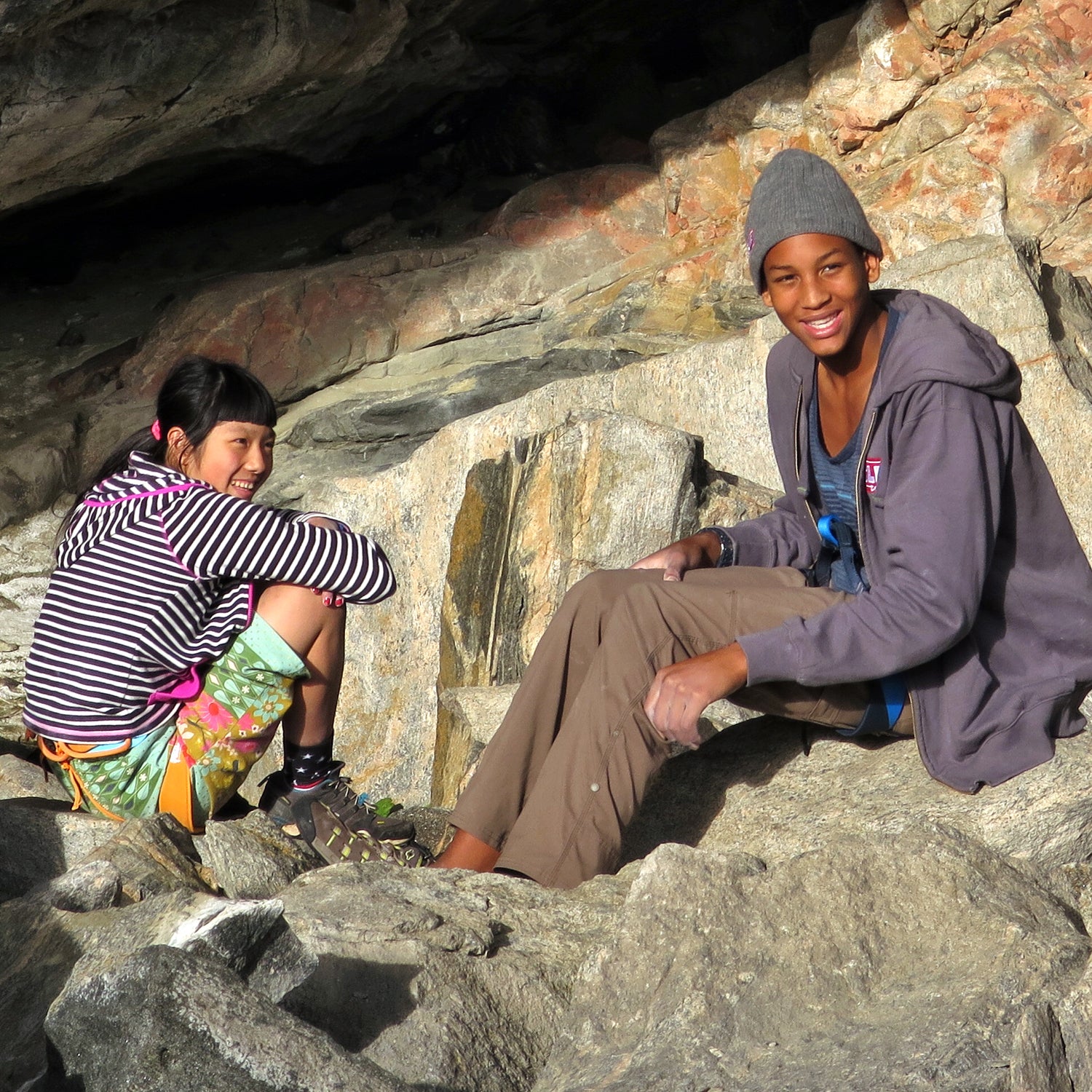Ashima Shiraishi, 14, and Kai Lightner, 16, have a lot in common. Both took the climbing world by force even before they were teens. Both are full-time students who spend most of their spare time at the gym or competing. And both are incredibly mild mannered—Shiraishi and Lightner are modest about their own accomplishments, though they're perfectly happy to list each other's strengths. Shiraishi, who’s climbed more V14 bouldering problems than any other woman, was in 2015 by Climbing magazine. Lightner . Last year, the two phenoms finally teamed up for their first trip together, to climb in Norway’s Flatanger cave, which resulted in a Sender Films movie called Generation Up!
We got both of them on the phone to talk about what it’s like being the future of their sport.
You both started climbing at age six. Do you worry about burning out since you started so young?
SHIRAISHI: I found climbing when I was six in Central Park. My parents didn’t introduce me to it. I found it on my own and I began to rock climb through my own determination. Sometimes I get frustrated when I climb, but I can’t think of ever quitting. I get so much joy from it.
LIGHTNER: I always put a high priority on enjoying the sport every step of the way. It never feels like too much, and if it is, I just try to dial it back so I can keep up. If I ever found that climbing wasn’t enjoyable, I’d stop doing it, but I still have the joy for it.
How long have you two known each other?
SHIRAISHI: I think it was at my first nationals when I was eight.
LIGHTNER: I was 10. I never got to see her climb because she was in a different category. But even before I met her, I’d heard she was an amazing climber.
What do you think each other’s biggest strengths as a climber are?
LIGHTNER: It’s her mental focus and determination. She’s really good at balancing a project and not giving up. We all know she’s physically strong, but the way she’s able to pull it all together takes a lot of mental strength.
SHIRAISHI: Kai finds unique ways to move his body, and he thinks of ways to get up the route that nobody else does.
Did you play other sports growing up?
LIGHTNER: I played soccer and basketball. I wasn’t as good at them as climbing and none of it gave me the joy that climbing did. At the end of the day, climbing was always for me.
SHIRAISHI: I was always athletic and I used to do a lot of sports. Climbing and figure skating were my big ones, but I like climbing way more than figure skating.
You’re both full-time high school students. How do you balance it all?
SHIRAISHI: I have a pretty hard time balancing school and rock climbing because of my busy schedule. I get out of school around 3 p.m., then I go to the climbing gym for three hours or more. I get home, I do homework, and I’m usually asleep by 1 a.m. Then I’m up again at 6:30 a.m.
LIGHTNER: It’s definitely a juggling act. My mom is a teacher and she tries to limit the amount of school I miss, so I usually plan trips during my school breaks. My mom has always been on me to keep up with my schoolwork. If I didn’t get my schoolwork done, there was no climbing. That’s made me better at time management.
Is it tough to feel like a normal teenager?
SHIRAISHI: I feel like when I’m not climbing, I’m still a normal teenager. I go to school with my friends. They know that I climb but they don’t know much about it. I’m a regular 14 year old. I have a climbing world and a normal teenager world. I do make sacrifices for climbing—I can’t always hang out with my friends, or go shopping or go to the movies, but I think climbing is worth it.
LIGHTNER: Climbing takes up a huge amount of my time. I’m not always able to participate in after-school activities or hang out with my friends. After school, I practice, do my homework, go to bed. I do miss out on some things.
There’s talk of climbing making it into the Olympics in Tokyo in 2020. What do you both think of that?
LIGHTNER: When I first got into the sport, I never imagined it’d get to the Olympics. But seeing how the sport has grown and seeing how close the Olympics are, I’d be so honored to represent my country at the Olympics.
SHIRAISHI: That would be a dream come true. Since I began climbing, my dream was have it in the Olympics, and of course, to be there competing. All of my family lives in Japan and I have a lot of friends in Tokyo, so that would mean a lot to me.
What have you learned from climbing?
SHIRAISHI: Climbing isn’t easy. When you’re trying to push your limits and keep on upping your accomplishments, you can get frustrated. Much of the time, you keep falling. It’s repetitive falling. But once you stand up, you’re that much closer to getting to the top.
LIGHTNER: You’ve got to be able to work hard. You’ve got to be able to set a goal and do everything in your power to achieve it.


